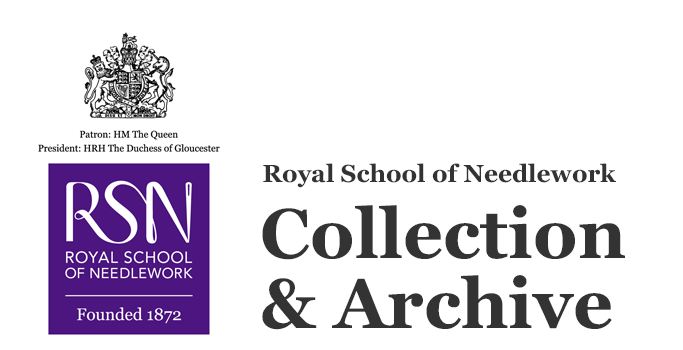Sampler
Object name
Maker
Date made
1804
Place made
Description
Map sampler of two hemispheres made in Liverpool by 'M.E.W.' in 1804.
Content description
A map sampler of two hemispheres made in Liverpool by 13-year-old Mary Waterhouse in 1804. The sampler features a double-hemisphere map projection of the world, with the Americas, part of Oceania, and the Pacific and Atlantic Oceans in the left circle and Europe, Africa, Asia, and Australia in the right circle. The latitude and longitude lines and all text are worked in black silk back and straight stitches, while the continents and some country outlines are embroidered in split stitches worked in white silk thread. The boundaries where the land meets the sea are further emphasised with a single row of long and short stitch in a darker yellow silk thread. The spheres are outlined in a black silk stem stitch. The background is worked in a dark yellow long and short stitch. Two embroidered plaques feature in between the two spheres at the top and bottom of the frame. The top on has the initials M.E.W. in a satin stitch over laid work, surrounded by small flowers worked in chain stitch, satin stitch, and French knots. The lower panel has 'Liverpool 1804' in a satin stitch over laid work.
The Waterhouses were a Quaker family in Liverpool, England, with connections to manufacturing and trade. Mary Waterhouse was born on 14 January 1791, the daughter of Ann Waterhouse and Nicholas Waterhouse, a merchant and cotton broker. In 1817 she married Jonathan Flounders, a merchant.
Map samplers emerged in Britain in the 1770s and had fallen from popularity by the 1840s. They gave girls undergoing their embroidery education the opportunity to learn geography while also learning needlework. Two hemisphere maps such as Mary Waterhouse's are relatively rare, especially in comparison to the many contemporary map samplers that depict England, Wales, and part of Scotland.
The Waterhouses were a Quaker family in Liverpool, England, with connections to manufacturing and trade. Mary Waterhouse was born on 14 January 1791, the daughter of Ann Waterhouse and Nicholas Waterhouse, a merchant and cotton broker. In 1817 she married Jonathan Flounders, a merchant.
Map samplers emerged in Britain in the 1770s and had fallen from popularity by the 1840s. They gave girls undergoing their embroidery education the opportunity to learn geography while also learning needlework. Two hemisphere maps such as Mary Waterhouse's are relatively rare, especially in comparison to the many contemporary map samplers that depict England, Wales, and part of Scotland.
Dimensions
width: 70cm
height: 45cm
height: 45cm
Materials
Stitches
Motifs
Credit line
Gift of Jillian Mary Howard, 2022.
Catalogue number
RSN.2566
© Royal School of Needlework

